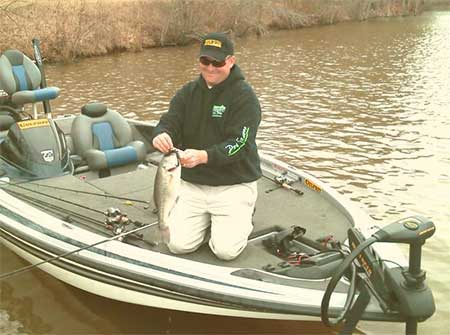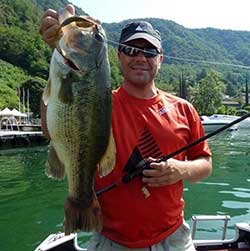If you’re a seasoned bass fisherman, then this lesson may initially make you feel like Bill Gates taking a beginner class on Windows 95. But the lesson is deeper than that for sure. It seems to be a question I field very often when coming across people that recreationally bass fish every so often. The context of the question is actually very valid when you think about it. The question usually sounds something like, “If you’re fishing a plastic worm, why not just use a color and shape that looks like a real worm?” Here’s the long and short of my answer: “Well, worms don’t just imitate worms.”
With the advent of 3 millions shapes, sizes and colors of worms, it seems like worms are meant to imitate everything under the sun except worms themselves. To their credit, I’m glad it has evolved that way because the plastic worm has become arguably the most effective artificial bait ever used for bass. It wasn’t really long ago that the plastic worm was so effective that conservationists felt their use may be detrimental to bass populations if used regularly, because, “The bass could not resist them.” I guess you could say that at the time of many virgin bass on virgin waters, that thought process was rightfully discussed. Case in point, if you have ever gotten access to a pond or small lake that is barely fished, chances are the first thing you pick up is the Original Culprit plastic worm. That’s because they work, and they’re a workhorse in a bass fisherman’s tacklebox, especially when simplicity is necessary. But don’t get lost in all the selections out there, just remember worms could be whatever you want them to be, and you just have to read into the given situation a little.
Even seasoned bass fishing veterans get reminded of these simple worm lessons quite frequently when dialing in bass patterns. I personally had one of those reality checks while bass fishing this fall in a creek. The shad were everywhere in tight clusters while bunched up in the way back of a stained creek. I attacked the area with traditional moving baits and even pitched around jigs and creature baits with little success. I took a break thinking about the situation, then acted upon some advice I got from a friend of mine, Dustin Wilks who is my fellow co-host of “Carolina’s Perfect Cast” on the Pursuit Channel. He had a lot of success in a similar area on another lake by switching to a 7 inch Culprit Fat Max that was “shad” colored. Too simple right? The Culprit color was actually called black shad…silver-ish on one side and black on the other. Long story short, no bites for me was turned into a very productive day. It was that simple addition of the subtle silver flash in the worm that made it look like a shad that helplessly wandered from the protection of the school. I would bet I caught every bass that was living in there that day by simply dumbing it down and making a color change.
The shape and action of the simple plastic worm is a versatile bass catching machine, but it’s very easy to overlook this as the real reason for their effectiveness, while burdened by thinking you have to imitate a real worm. Take a second to work through and choose from the great color selections offered in worms like the Fat Max that bass favorites, and I’m confident that you will have many days spun positively, especially if you really dial it in like I did that day.

